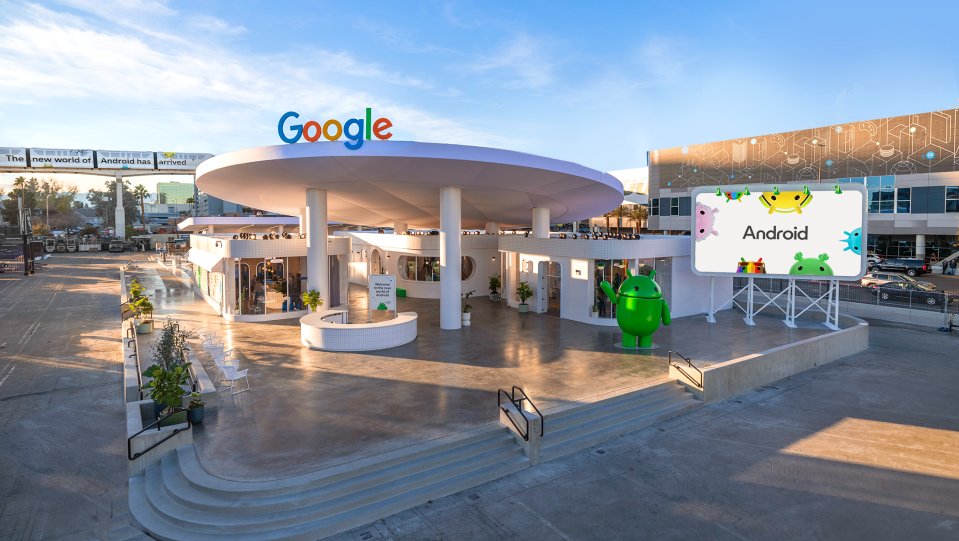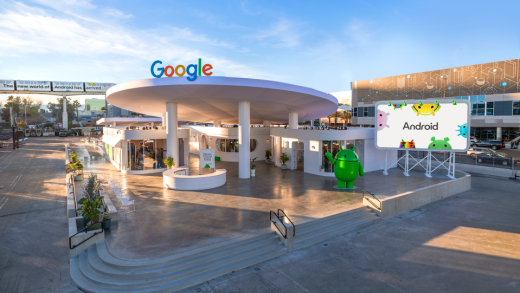CES 2024 Day 2 recap: A wild Rabbit gadget appears while Google offers its own take on Apple software tricks
Everything you missed at CES 2024 Day 2 on the show floor in Las Vegas: AI, trending gadgets and more
Plus, a selection of smart home, transportation and accessibility news.

The show floor at CES 2024 opened on Tuesday, and people have been racking up their steps, canvassing Las Vegas’ vast convention centers and hotel ballrooms to see all the latest and weirdest tech products. The Engadget team has been getting our cardio in, braving both vehicular and human traffic to get face and hand time (and other body parts?) with the most intriguing demos here, while companies haven’t stopped holding press conferences and announcing new items. If you don’t have time to parse through every individual headline or are here in Vegas and want to know where to go, here’s a recap of the biggest news out of CES 2024’s second day.
One of the biggest booths at the show is, as usual, Google, and the company also had a fair amount of news to share. In keeping with the same theme it’s been doing the last few years of “Better Together,” Google shared updates to its inter-device software like Fast Pair and announced it’s working with Samsung to integrate and rename its Nearby Share feature to Quick Share, which is the current name of Samsung’s version of the same thing. This should hopefully simplify things for Android users, and give them a more cohesive alternative to Apple’s AirDrop. Details were pretty scarce on whether there are changes coming to Samsung users, but those who have Nearby Share should see a new icon pretty soon.
Google also added support for people to Chromecast TikTok videos to compatible TVs and screens and is bringing its apps to some Ford, Nissan and Lincoln vehicles later this year. Android Auto will also be able to share your electric vehicle’s battery levels to Google Maps so it can factor in recharge stations, charge times and stops into your routes. This is, again, similar to a feature in Apple’s next-gen CarPlay.
Speaking of EVs, Honda also debuted new EV concepts called the Saloon and the Space Hub. The Saloon is a sedan with an aerodynamic design and rides low to the ground, while the Space Hub is a minivan that is a little boxier and its seats has its passengers facing each other. Honda said it will develop a model based on the Saloon concept car for North American markets in 2026, with no word yet on the Space Hub.
In other transportation news, Hyundai brought an updated version of its S-A2 Air Taxi to the show. The S-A2 is an electric vertical take off and landing vehicle that has a cruising speed of 120mph when it reaches an altitude of 1,500 feet. It’s designed to fly short trips between 25 to 40 miles and the company envisions it as an everyday transportation solution for urban areas.
We also got more smart home news from companies other than Google, including Amazon, which said it will adopt the Matter standard for Casting, but it won’t support Chromecast or Apple’s AirPlay. How nice. We also saw new face-scanning and palm-reading door locks, smart outdoor lights by Nanoleaf and a new Weber Searwood smart grill that’s cheaper and more versatile.
There has been a smattering of mobile news, including the Clicks iPhone keyboard case and a surprising, adorable device called the Rabbit R1. It’s pitched as an AI-powered assistant in what’s basically a cute squarish walkie-talkie co-designed by Teenage Engineering. It has a tiny 2.88-inch touchscreen, an analog scroll wheel, two mics, a speaker and a 360-degree camera you can spin to face toward you or through the back of the handset. You’re supposed to talk to the Rabbit AI by pushing down a button (like a walkie talkie) and ask it to do anything like book an Uber or look for a recipe tailored to your specific list of ingredients.
There’s been a lot more at the show, but I wanted to take some time to shout out a bunch of intriguing accessibility products. We saw the OrCam Hear system that’s designed to help people with hearing loss isolate the voices of specific speakers in crowded environments. There’s also the GyroGlove, which is a hand-stabilizing glove for people with hand tremors, as well as the Mouthpad, which lets you control your phone, tablet or laptop by using your tongue.
We also saw an update to the Audio Radar system that provides visual cues for gamers who are hard of hearing to see where sounds are coming from and what type of sounds they might be. It’s very heartening to see all this development in assistive technology at CES, especially when the industry often spends so much time and money on less-worthy endeavors.
We’re nearing the end of the show and as we get ready to do our final sweeps of the show floor, the Engadget team is also looking back and contemplating the best things we saw at CES 2024. We’ll be putting together our Best of CES awards list soon, so make sure you come back to see what we decided were the winners of the show.
(9)


